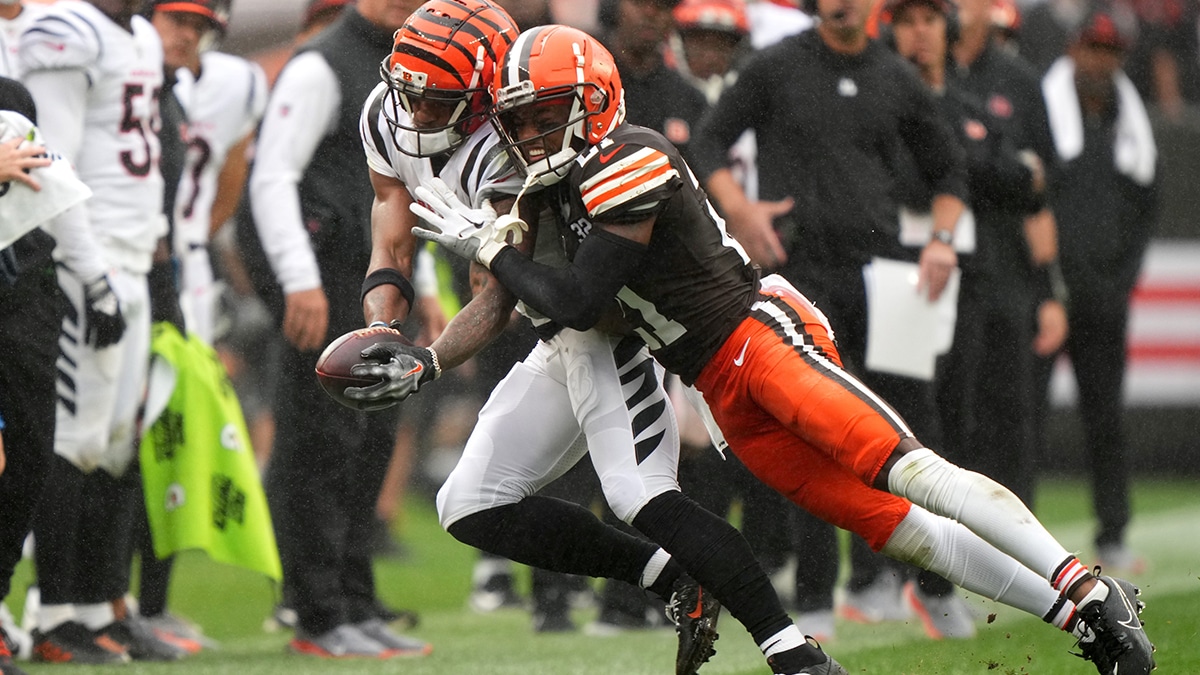The Cleveland Browns are likely to move from their current lakefront site. While they are reviewing a $1.1 billion plan from Cleveland to update their 25-year-old downtown stadium, the team has shown a clear preference for building a $2.4 billion dome in Brook Park, Ohio.
In a letter to season-ticket holders, the Browns presented renderings of their proposed new facility, detailing plans for a state-of-the-art venue they believe will help Cleveland attract and host major events like the Super Bowl and the Final Four.
Cleveland Browns moving out of their downtown stadium
“As you know, we have been hard at work on a long-term stadium solution to bring our fans the best-in-class experience they deserve while also positively impacting the Northeast Ohio region. The process began as far back as 2017, and our efforts have intensified as we approach the end of our current lease after the 2028 season,” according to the letter.
Also in the letter from Dave Jenkins of the Haslam Sports Group, the proposed $2.4 billion dome in Brook Park was described as a “transformational option.”
Jenkins emphasized that this new venue would be a “a modern, dynamic, world-class venue that would greatly enhance the fan experience and enable the State of Ohio and our region to compete for some of the biggest events in the world 365 days a year. Similar to other markets in the Midwest, this proposed domed stadium would catalyze our region in a major way.”
With the lease on Cleveland Browns Stadium expiring in 2028, team owners Jimmy and Dee Haslam revealed earlier this year that they are considering two options for their future stadium.
The choices are a $1 billion renovation of the current downtown facility or a new domed stadium located outside the city, with the latter option costing twice as much.
The Cleveland Browns in the wrong side of the history books

The Cleveland Browns’ current stadium might become the first ever to be built and demolished without hosting a single playoff game. The last playoff game held there was on January 1, 1995, when the Browns defeated the New England Patriots 20-13 in the 1994 AFC Wild Card game.
The Browns have yet to make a Super Bowl appearance, despite having won 11 Conference Championships (prior to the 1970 NFL-AFL merger) and 12 Divisional Championships.
Their most recent playoff appearance was in the 2023 NFL season, where they were defeated by the Houston Texans in the Wild Card Round.
The Cleveland Browns have faced several playoff disappointments in recent years. In 2020, they lost in the Divisional Round to the Kansas City Chiefs.The previous playoff appearance in 2002 saw them knocked out in the Wild Card Round by the Pittsburgh Steelers.
The Browns also suffered defeats in the Divisional Round in 1994 against the Pittsburgh Steelers, and lost the Conference Championship in 1989 to the Denver Broncos.
Additionally, in 1988, they were eliminated in the Wild Card Round to the Houston Oilers, now known as the Tennessee Titans.
More details for the Browns stadium relocation
The presentation to fans also featured a nearly three-minute video. It included a message stating, “While significant work remains, the more we have explored the Brook Park option, the more attractive it has become, and we are excited to share the current vision with you.”
The video outlined a vision where the new dome would host major events such as blockbuster concerts, WWE WrestleMania, the Final Four, and the like. Surrounding the stadium, planners envision a vibrant community with restaurants, shopping, hotels, and a Public Square-like area designed for outdoor concerts and holiday festivals.
The Haslam Sports Group highlighted that the initiative would involve a “public-private partnership” and would extend beyond merely constructing a stadium. They also noted that they are committed to avoiding the use of current taxpayer funds, ensuring that these resources remain available for urgent community needs.
The letter states that the Haslams would cover $1.2 billion of the $2.4 billion estimated cost for the new facility. This amount does not account for an additional “approximately $1 billion in privately funded phased development” that is also planned and expected to have a significant impact on the region.
The Haslam Sports Group stressed its commitment to collaborating with the city of Cleveland on the development of the downtown waterfront area, regardless of whether the stadium remains there or not.
It’s still very early in the process, and many factors could change in the coming months and years. However, with the release of renderings, Cleveland fans should start preparing for the possibility of significant changes in the near future.



















